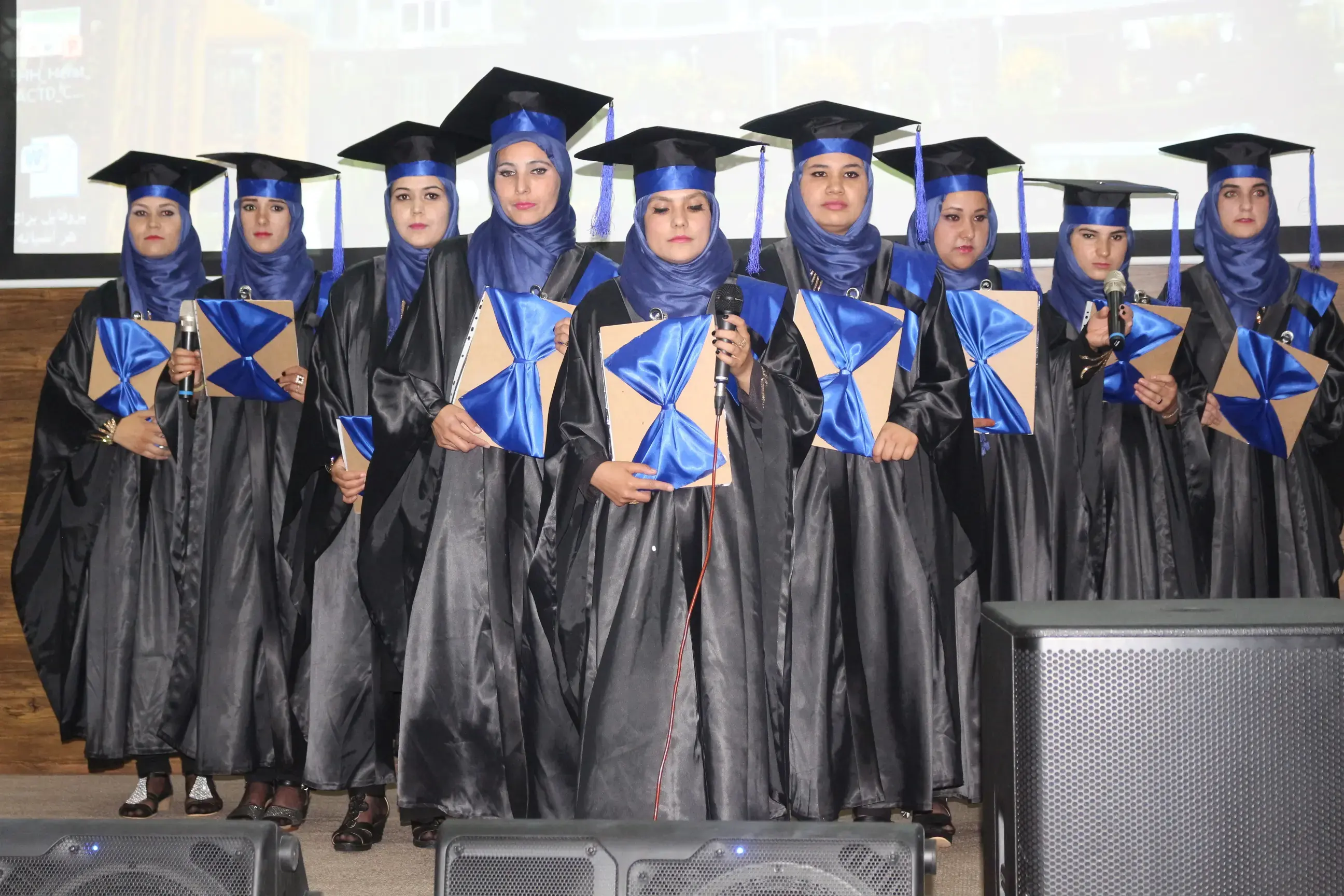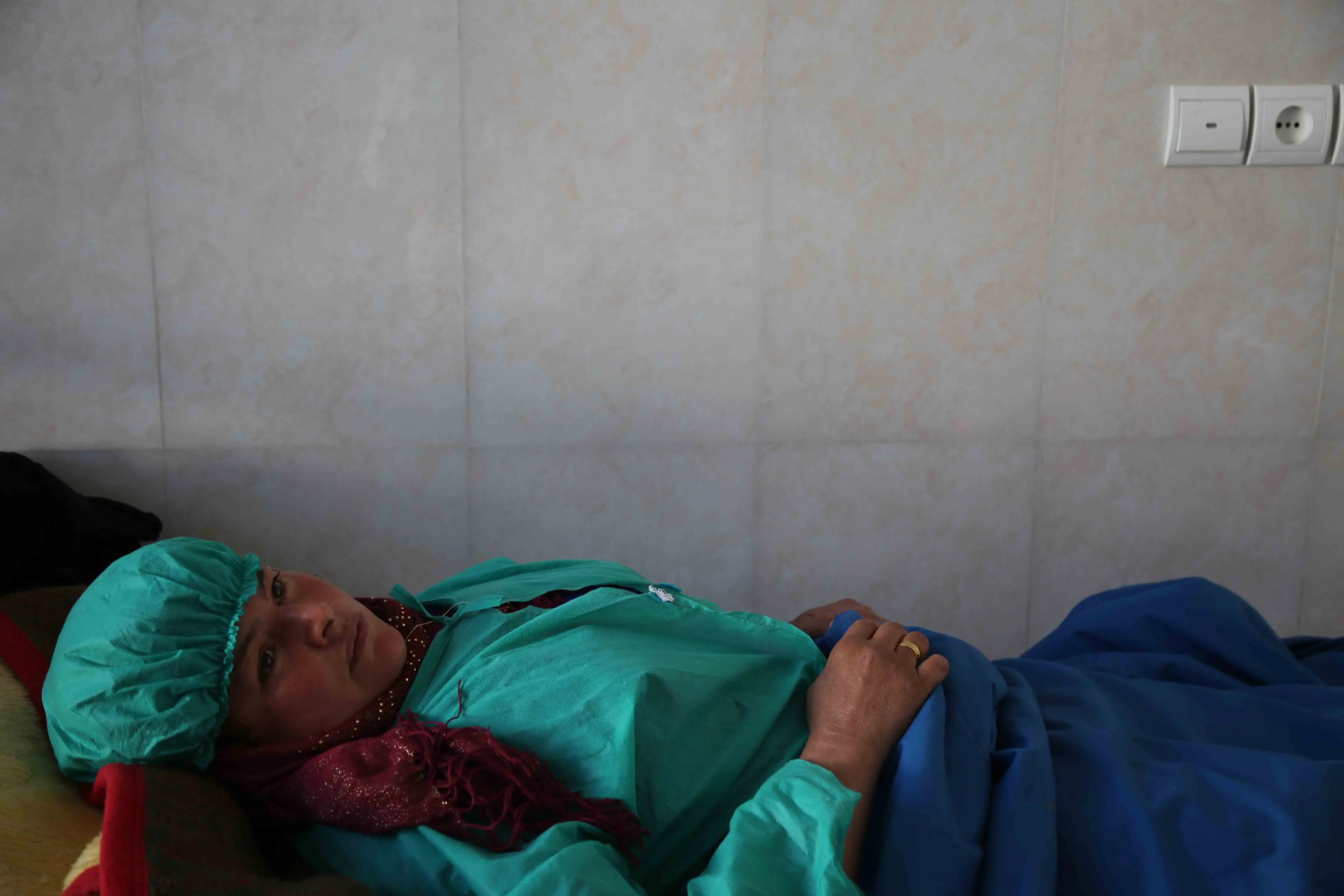2 million of them are 14 or youngerKabul, 03 November 2013 - Motherhood in childhood is a huge global problem, especially in developing countries, where every year 7.3 million girls under 18 give birth, according to The State of World Population 2013, released today by UNFPA, the United Nations Population Fund alongside Central Statistics Organization, Ministry of Public Health, Ministry of Women's Affairs and Deputy Ministry to Youth Affairs.
Of the 7.3 million births, 2 million are to girls 14 or younger, who suffer the gravest long-term health and social consequences from pregnancy, including high rates of maternal death and obstetric fistula, according to the report, entitled, "Motherhood in childhood: facing the challenge of adolescent pregnancy".
The report places particular emphasis on girls 14 and younger who are at double the risk of maternal death and obstetric fistula.
‘Motherhood in childhood" offers a new perspective on adolescent pregnancy, looking not only at the girls' behavior as a cause of early pregnancy, but also at the actions of their families, communities and governments.
"What is needed is a new way of thinking about the challenge of adolescent pregnancy," said UNFPA Executive Director, Dr. Babatunde Osotimehin, "Instead of viewing the girl as the problem and changing her behavior as the solution, governments, communities, families and schools should see poverty, gender inequality, discrimination, lack of access to services, and negative views about girls and women as the real challenges, and the pursuit of social justice, equitable development and the empowerment of girls as the true pathway to fewer adolescent pregnancies."
According to the report, early pregnancy takes a toll on a girl's health, education and rights. It also prevents her from realizing her potential and adversely impacts the baby.
It is not just mothers and babies that suffer consequences. Children having children also severely impacts communities and nations' economies. For example, if the more than 200,000 adolescent mothers in Kenya were employed instead of having become pregnant, $3.4 billion could have been added to the economy. This is equivalent to the value of Kenya's entire construction sector. If adolescent girls in Brazil and India had been able to wait until their early 20s, the countries would have greater economic productivity equal to over $3.5 billion and $7.7 billion, respectively.
While the report concludes that adolescent pregnancy is a much bigger challenge in the developing world than in developed countries, it finds that it is still also a significant issue in the latter. In the United States, for example, only about half of the girls who become pregnant as adolescents complete high school by 22, compared to 9 out of 10 girls who do not become pregnant. It also harms the economy as a whole, with nearly $11 billion a year in costs to taxpayers in the U.S. alone.
Despite the critical need to prevent adolescent pregnancy, "Motherhood in childhood" finds that the global community directs less than two cents of every dollar spent on international development to adolescent girls. This is especially troubling, considering we have the largest adolescent population in human history.
However, money is just one part of the solution. UNFPA is promoting a holistic approach to tackling the challenge of adolescent pregnancy, which does not dwell on changing the behaviour of the girl, but rather on changing the attitudes and actions of the society she lives in. This includes:
- Keeping girls in school
- Stopping child marriage
- Changing attitudes about gender roles and gender equality
- Increasing adolescents' access to sexual and reproductive health, including contraception
- Providing better support to adolescent mothers
"We must reflect on and urge changes to the policies and norms of families, communities and governments that often leave a girl with no other choice, but a path to early pregnancy, "said Dr. Osotimehin. "This is what we are doing at UNFPA and what we will continue to do and recommend until every girl is able to choose the direction of her life, own her future and achieve her greatest potential."
Data from Afghanistan
In Afghanistan, 12 per cent of women age 15 to 19 have started childbearing, with 8 per cent having had a live birth and 4 per cent pregnant with their first child. (AMS 2010).
| Table 1: Adolescent pregnancy and motherhood | |||
| Age of women (years) | Have had a live birth (%) | Pregnant with first child (%) | Have begun childbearing (%) |
| 15 | 0.4 | 1.2 | 1.2 |
| 16 | 1.5 | 1.7 | 3.2 |
| 17 | 5.6 | 5.2 | 10.8 |
| 18 | 12.4 | 6.9 | 19.6 |
| 19 | 24.6 | 8.5 | 33.2 |
| Source:Afghanistan Mortality Survey 2010 |
On the other hand, available data also shows a high correlation between early child bearing and education and wealth, i.e. according to AMS 2010 in the past 0-4 years, women (15%) with no education already started child bearing, but child bearing among women with some higher education dropped to 5% (see table 2). Similarly 14% of women who belonged to the poorest households already began childbearing, whereas, women that belonged to the richest families 10% began childbearing.
|
Table 2: Early Pregnancy by Education, Wealth Quintile and Residence |
|
|
|
|
|
Have had live birth (%) |
Pregnant with first child(%) |
Have begun child bearing ((0%) |
|
Education |
|
|
|
|
No education
|
9.6 |
5.2 |
15.0 |
|
Madrassa |
9.5 |
7.8 |
17.3 |
|
Primary |
5.9 |
3.9 |
9.8 |
|
Secondary |
2.7 |
1.8 |
4.5 |
|
Higher |
3.3 |
1.7 |
5.0 |
|
Wealth quintile |
|
|
|
|
Lowest |
10.1 |
3.8 |
14.0 |
|
Second |
8.4 |
4.2 |
12.9 |
|
Middle |
7.3 |
4.8 |
12.1 |
|
Fourth |
6.6 |
5.4 |
12.1 |
|
Highest |
6.4 |
3.5 |
10.0 |
|
Residence
Urban |
6.1 |
2.6 |
8.9 |
|
Rural |
8.1 |
4.8 |
13.1 |
|
|
|
|
|
|
Source: Afghanistan Mortality Survey 2010 |
UNFPA works to deliver a world where every pregnancy is wanted, every childbirth is safe and every young person's potential is fulfilled.
For more information or interview requests, please contact:
Ahmadullah Amarkhil, +93 70 026 3232 amarkhil@unfpa.org;
Eidmarjan Samoon +93 (0)79 914 8621 samooned@yahoo.com
MoPH: Kaneshka Turkistani + 93(0)70 015 9151 kaneshkaarab032@gmail.com
MoWA: 020 220 0507
DMoYA: +93 (0)70 021 7101
For the full report and other resources, please visit:
afghanistan.unfpa.org
https://www.facebook.com/UNFPA




